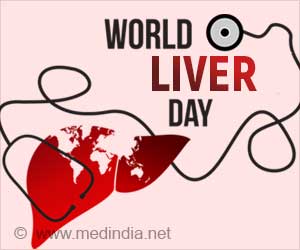Asthma patients, who have recurring symptoms and exacerbations despite using the combination therapy of inhaled glucocorticoids and long acting beta-agonists (LABA), show significant improvement with the addition of tiotropium, according to a study published in the New England Journal of Medicine.
Tiotropium is a long-acting anticholinergic bronchodilator used widely for treatment of chronic obstructive pulmonary disease (COPD) but it has not been approved yet for the treatment of asthma. Unlike beta-agonists that affect the small airways in the lungs, anticholinergic drugs affect the muscles around the large airways. When the lungs are irritated, these muscles tighten and narrow down the airways. Anticholinergic drugs work by stopping the muscles around large airways from tightening.
The patients were randomly assigned to self-administer 5 mcg (two puffs each of 2.5 mcg) of tiotropium or matching placebo using a soft-mist inhaler (Respimat) as add-on therapy every morning. A total of 409 patients receiving tiotropium (211 in trial 1 and 198 in trial 2) and 405 patients receiving placebo (202 in trial 1 and 203 in trial 2) completed their respective trial.
The major findings were –
• Lung function: Airflow obstruction was significantly reduced in the tiotropium group, as compared with the placebo group.
• Severe exacerbations time: Severe asthma exacerbation time was extended by 56 days with add on tiotropium therapy, as compared to the placebo therapy
• Number of exacerbations: Add on tiotropium therapy also reduced the number of exacerbations by 0.13 per patient in a year.
The researchers concluded that ‘In patients with poorly controlled asthma despite the use of inhaled glucocorticoids and LABAs, the addition of tiotropium significantly increased the time to the first severe exacerbation and provided modest sustained bronchodilation’.
The study, however, had serious drawbacks. Dr Elisabeth H. Bel, from Department of Respiratory Medicine, Academic Medical Centre, Amsterdam, the Netherlands, pointed out that the researchers failed to verify whether subjects were fully compliant with background asthma therapy at enrollment. This is important because 80 percent of patients with poorly controlled asthma have poor treatment adherence, so it might have left room for additional bronchodilation by tiotropium.
Further, she pointed out that patients with previous heart disease were excluded from the study. She cautioned – ‘Improved drug delivery by the Respimat device may also increase plasma concentrations of tiotropium and thereby increase the risk of death from cardiovascular causes’.
The present study is valuable but requires further research toward ‘safe application of long-acting anticholinergic agents in patients with asthma’.
Reference: Kerstjens HA, et al. Tiotropium in Asthma Poorly Controlled with Standard Combination Therapy. N Engl J Med.
Source-Medindia














